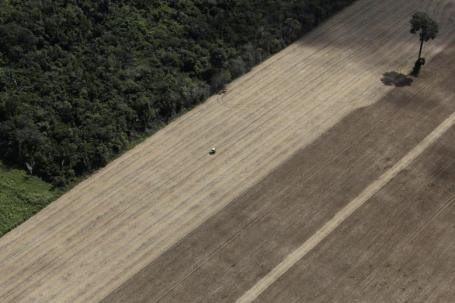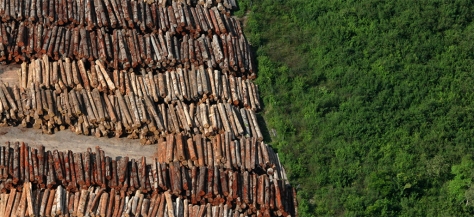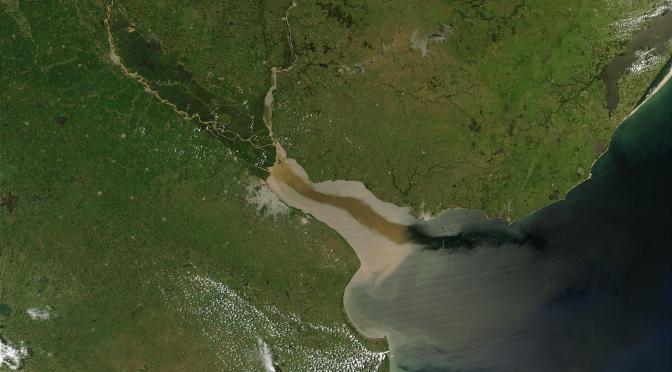The Amazon forest today




The Amazon rainforest has long been recognised as a repository of ecological services not only for local tribes and communities but also for the rest of the world. It is also the only rainforest that we have left in terms of size and diversity.



Filtering and reprocessing the world’s harmful carbon dioxide output
Trees have hidden attributes that play a key role in reducing pollutant levels. Take carbon dioxide (CO2) for example, a gas emitted from both natural and human sources. Over the last 150 years, humans have been pumping massive amounts of CO2 into the air by burning fossil fuels, coal, oil and natural gas – this is a major driver for global climate change.


Carbon dioxide in, oxygen out
Under natural conditions, plants remove CO2 from the atmosphere and absorb it for photosynthesis, an energy-creating process that yields:
- Oxygen, which is released back into the air
- Carbon, which allows the plant to grow.
So, without tropical rainforests, the greenhouse effect would likely be even more pronounced, and climate change may possibly get even worse in the future.
To find out more about the Greenhouse Effect, go here: https://theserangoonview.wordpress.com/2017/03/09/living-in-a-greenhouse-a-blanket-around-the-earth/

Amazon rainforests and carbon dioxide

The importance of the Amazon rainforest for local and global climate
Tropical forests and woodlands (e.g. savannas) exchange vast amounts of water and energy with the atmosphere and are thought to be important in controlling local and regional climates.
Water released by plants into the atmosphere through evapotranspiration (evaporation and plant transpiration) and to the ocean by the rivers, influences world climate and the circulation of ocean currents. This works as a feedback mechanism, as the process also sustains the regional climate on which it depends.

Find out about the impacts of climate change on the Amazon
The Amazon rainforest could cure you
What is the connection between the blue-green pills in your bathroom cupboard and the Amazon wildlife? The natural roots of medicine. For millennia, humans have used insects, plants and other organisms in the region for a variety of uses; and that includes agriculture, clothing and, of course, cures for diseases.

Indigenous people such as the Yanomami and other groups of mixed ancestry (e.g. the mestizos of Peru or the Caboclos of Brazil) have perfected the use of chemical compounds found in plants and animals. Knowledge of using these plants is usually held by a medicine man (shaman), who passes on this tradition to an apprentice, a process which has been ongoing for centuries and that forms an integral part of people’s identity.
With rainforests going fast, the continuity of this knowledge for the benefit of future generations is under threat.

Untapped potential of the Amazon’s plants
Scientists believe that less than half of 1% of flowering plant species have been studied in detail for their medicinal potential. As the Amazon rainforest biome slowly shrinks in size, so does the richness of wildlife found in its forests, along with the potential use of plants and animals that remain undiscovered.

Read the full article here:
http://wwf.panda.org/what_we_do/where_we_work/amazon/about_the_amazon/why_amazon_important/
Find out more!
Some more information about the Amazon Rainforest:
https://en.wikipedia.org/wiki/Amazon_rainforest
Top 10 medicinal plants found in the Amazon Rainforest:
https://www.rainforestcruises.com/jungle-blog/top-10-medicinal-plants-of-the-amazon
Did you know that the Brazil Nut (found in the Amazon rainforest) has cancer-fighting properties?
http://theshawnstevensonmodel.com/benefits-of-brazil-nuts/

Witness the destruction, the crimes, and the exploitation in the Amazon rainforest: http://blogs.reuters.com/photographers-blog/2013/11/11/from-paradise-to-inferno/
Leave a reply!
- How does deforestation contribute to the Enhanced Greenhouse effect?
- In what way does the consumption of beef increase the rate of deforestation?
- In your opinion, what is the link between biodiversity and modern medicine?


One thought on “Why is the Amazon rainforest important?”